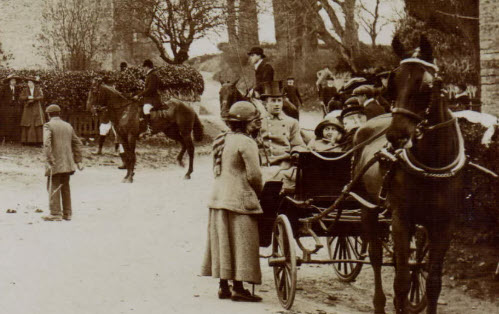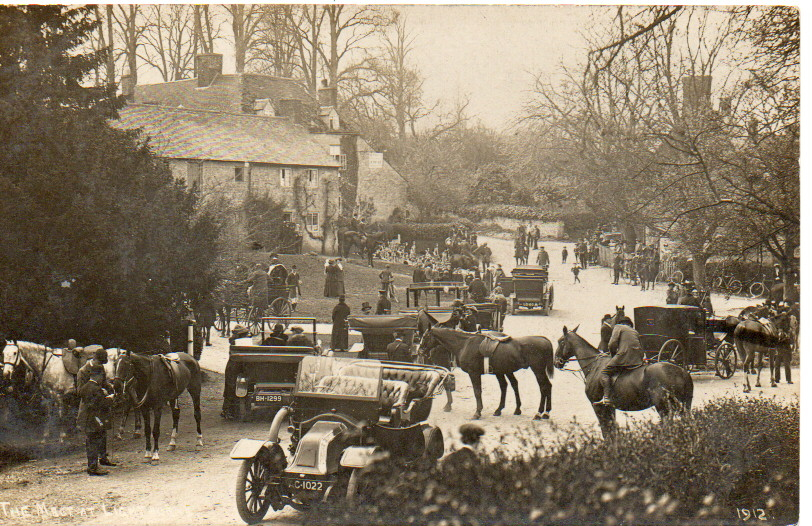

The History of Lighthorne, Warwickshire
Lighthorne is a remarkably ancient village with over 4,000 years of continuous human habitation, making it one of Warwickshire’s most historically significant settlements. Located in a steep-sided natural valley approximately six miles south of Leamington Spa, the village sits at the crucial geological boundary between the Cotswold limestone and the red earth of the Midlands plain—a position that has shaped its strategic importance throughout history.
Ancient Origins and Early Settlement
Archaeological evidence reveals that Lighthorne has been inhabited since Neolithic times, with successive civilizations leaving their mark on the landscape. The village’s location was chosen for its natural advantages: a spring line formed where limestone meets clay provided reliable water, while the sheltered valley offered protection and fertile soil.
Roman Period: The area shows significant Roman activity, with a Roman villa discovered 100m north of Hill Farm, where fragments of tile, bone, pottery, and whetstones have been found. Aerial photographs reveal complex traces of settlement including enclosures and possible buildings, indicating intensive 4th-century occupation. The Romans divided Britain along the nearby Fosse Way, with Lighthorne sitting on this crucial frontier between civilian and military districts.
Anglo-Saxon Settlement: Following Roman withdrawal, the Germanic Hwicce tribe settled the area, giving Lighthorne its name. These people were among the last waves of Germanic invaders and the last to adopt Christianity. The name “Lighthorne” derives from their descriptive terminology for the landscape, meaning something intelligible to newcomers without written language. Evidence of this period includes an Anglo-Saxon cemetery 300m north of the church, where two skeletons (a woman and child) were discovered with grave goods including bronze hanging bowl escutcheons, now held in Warwick Museum.
Medieval Foundations
Domesday Book (1086): Lighthorne appears prominently in the Domesday survey as a substantial settlement with 36 households—placing it in the largest 20% of recorded settlements. The entry records: “William Bonvallet holds Lighthorne from the King. 5 hides besides the inland. Land for 18 ploughs. In lordship 2 ploughs; 7 slaves. 19 villagers and 9 smallholders with a priest have 6 ploughs. Meadow 30 acres; a copse 2 furlongs long and 20 perches wide. The value was 100s; now £7”.
Norman Period: After the Norman Conquest, Lighthorne passed to Henry de Newburgh, the first Norman Earl of Warwick. The lordship changed hands multiple times over six centuries, with the Earls of Warwick frequently being the owners.
Church Development: While a priest is mentioned in Domesday, the first recorded church dates from 1291, with the first rector named as Henry de Hampton in 1307. However, a 10th-century preaching cross stump in the churchyard suggests the site has been used for worship for over a millennium. The church was rebuilt multiple times—in 1774 (when the tower was constructed) and again in 1875-6 in late 13th-century style.
The Great Transformation: Estate Village Era (1715-1921)
Lord Willoughby de Broke’s Acquisition (1715): The village’s most significant transformation began when Lighthorne became the property of Lord Willoughby de Broke in 1715. This marked the beginning of Lighthorne’s evolution into a model estate village.
Pioneering Enclosure (1721): Lighthorne holds the distinction of being the first Warwickshire village to have its common fields enclosed by Act of Parliament in 1721. Lord Willoughby de Broke, holding over half the parish, led this revolutionary change from the medieval three-field system to enclosed farming. The enclosure displaced many smaller tenants who lost their rights to field strips and common grazing, leading to significant social upheaval as agricultural wages fell by 50% by 1830.
Architectural Heritage: The wealth generated from enclosed farming funded most of Lighthorne’s surviving historic buildings, including the Old School, Old Rectory, church tower, Bishops Farmhouse, Curacy Farm, and the Antelope pub. Church Hill Farmhouse (1548), built by the Pope family, remains the oldest domestic building in the village.
Industrial and Modern Periods
19th Century Stability: Unlike neighboring areas that embraced industrialization, Lighthorne maintained its rural agricultural character. The 1870 Imperial Gazetteer recorded 391 inhabitants in 85 houses, with Lord Willoughby de Broke still owning most of the village. The parish served as a meet for the Warwickshire hounds, emphasizing its continuing role in county society.
20th Century Changes: The Verney estates were broken up and sold by auction in the 1920s, ending centuries of single-family ownership. During World War II, the area saw significant change with the construction of RAF Gaydon in 1942, which led to the development of Lighthorne Heath as a separate settlement to house airmen and ground crews.
Conservation Recognition: Today, the historic heart of Lighthorne is designated as a Conservation Area, protecting the valley extending from Church Hill Farm through the village green to Curacy Farm. This recognition preserves the village’s unique character, including important features like the area around the Church and Old Rectory, and the village green with its historic buildings.
Archaeological Treasures
Lighthorne contains artifacts of national importance, including medieval stained glass featuring St. Sebastian, created from the same cartoon used at Fairford Church, Gloucestershire—considered the finest set of medieval windows in England. This glass likely came from the demolished chapel at Compton Verney, reflecting the village’s close connection with this great estate.
The village continues to yield archaeological discoveries, with recent excavations revealing Iron Age settlements, including small enclosures that may have surrounded roundhouses.
Lighthorne Today
Modern Lighthorne retains its historic character while adapting to contemporary needs. The 2011 census recorded 361 residents, and the village maintains active community organizations including the Lighthorne History Society, founded in 2006 to preserve and share the village’s remarkable 4,000-year story. The parish encompasses both the historic village and the more recent Lighthorne Heath development, representing the continuing evolution of this ancient settlement.
From Neolithic farmers to Roman villa owners, from Anglo-Saxon pioneers to Norman lords, from medieval villagers to Georgian estate workers, Lighthorne’s history represents a microcosm of English rural development. Its position on the ancient geological and cultural frontier has made it witness to—and participant in—many of the great transformations that have shaped England’s countryside over four millennia.